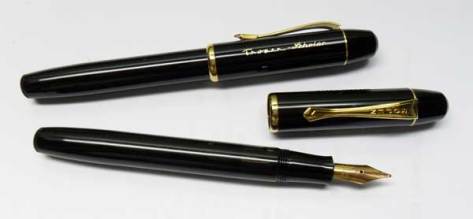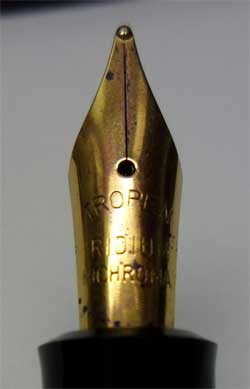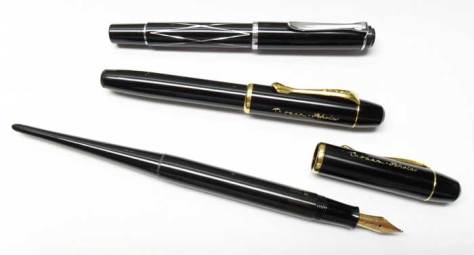This date in 1961 marks the earliest recorded appearance of the Pelikan P25, Pelikan’s first cartridge pen aimed at adults.
Pelikan launched the P25 after the unexpected success of the Pelikano: Pelikan’s first cartridge pen, launched in 1960 and targeted at school-going children. The P25 is not very different: instead of the Pelikano’s aluminum cap and steel nib, the P25 sports a rolled gold cap and 14K nib.
(Pelikan also launched the P15 at the same time as the P25, identical but with a nickel silver (billed as “Silvexa”) cap. The P15 and P25 were first offered in sapphire blue, then black.)
The P25 was based on the Pelikano, which in turn was based on the P1 – Pelikan’s belated and not very successful answer to the Parker “51”. For the P1 Pelikan retained its traditional piston-filling system, and only adopted cartridges with the Pelikano.
The P25 is slimmer and lighter than the 400s that Pelikan is best known for. The P25 seems a little smaller than the 400NN when capped, but when uncapped the P25 is actually longer. The 14K nib is stiffer than those on the 400s. The P25 cap has a Pelikan beak washer clip, following earlier pens, and is held in place by a dome the same plastic as the barrel.

From L to R: 400NN, 400, P25, a Pelikano
What’s interesting about the design is that the barrel unscrews about 1/3 from the end of the pen, instead of after the section. The threads for the cap are also high up, close to the nib. The pen is meant to take short international cartridges, and because of the construction it’s difficult to tell if you’re running out of ink until the cartridge is almost empty. But the end cap can hold a spare cartridge (inserted upside-down).
The P25 is an unassuming pen that doesn’t stray far from its origins as a student pen, and as a result it seems to be usually overlooked. This good example was almost a steal considering its rolled gold cap and 14K nib.









